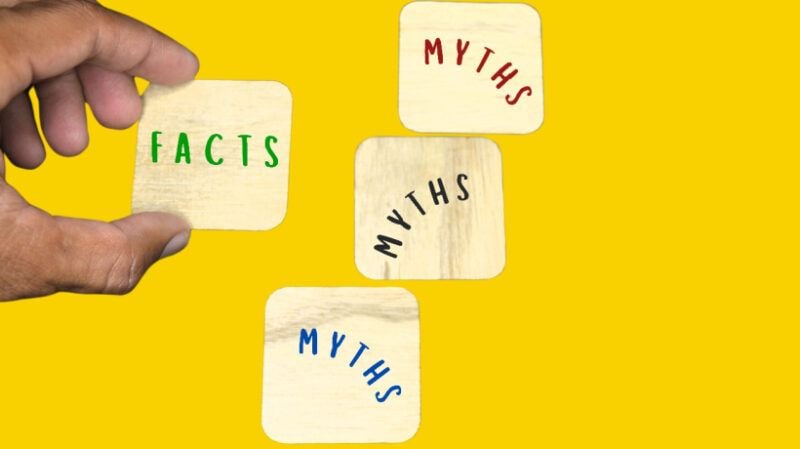

Busting Myths In Course Design And Facilitation
Stepping into the world of facilitation during my recent career shift has been a truly eye-opening experience—not just in terms of learning the craft of facilitation itself, but also in how course design plays a pivotal role in shaping impactful learning experiences. Designing a course goes far beyond simply delivering content—it’s about creating an engaging journey that motivates learners to stay involved and invested in the process. As I’ve navigated this new path, I’ve encountered several myths about course design along the way and, through experience, have worked to bust them. Here are some of the key misconceptions I’ve come across.
Debunking 5 Course Design Myths
Myth 1: It’s Just About Content
One of the biggest myths in course design is the idea that it’s simply about the content—the more information you can cram in, the better. In reality, this approach is far from effective. Think of designing a course like cooking. It’s not about stuffing a sandwich full of ingredients, hoping the flavor will come together. It’s about understanding how the individual elements—like concepts, activities, and discussions—work together to create a seamless and engaging experience. It’s about curating content that will keep learners intrigued and engaged, rather than overwhelming them with a flood of information. It’s the careful balance of quality over quantity that makes a course truly impactful.
Myth 2: One Size Fits All
Another common misconception is that when designing a course, you should aim to make it suitable for everyone. The idea here is that if you make the course broad enough, it will appeal to all learners. In truth, this often means the course ends up working for no one. The best courses are tailored to the specific needs, challenges, and interests of the target audience. To connect with learners, a course must resonate with their unique experiences and expectations. Designing a course that speaks to your audience’s distinct learning styles, preferences, and goals creates a much more meaningful and effective experience.
Myth 3: More Is Better
A common trap in course design is the belief that the more content and activities you include, the better the course will be. Overloading learners is like trying to pour water from a firehose when they only need a sip. Too much information at once can lead to confusion and overwhelm, leaving learners disengaged and disoriented. Instead, a successful course should be focused, concise, and impactful. By carefully curating content and structuring lessons in digestible segments, learners are more likely to absorb and retain the information being presented. Less can often be more, as it allows space for reflection, discussion, and deeper engagement.
Myth 4: Once You Have Their Attention, Motivation Is Easy
Grabbing learners’ attention at the beginning of a session is just the first step—keeping their motivation up is an ongoing effort. It’s easy to think that once you’ve hooked them with an exciting introduction or engaging activity, they’ll be motivated for the duration of the course. However, motivation is not a one-time thing; it’s something that needs to be nurtured continuously. Effective facilitators and course designers know that maintaining motivation requires ongoing engagement, relevant content, and real-world connections that make the learning experience feel meaningful. Providing opportunities for learners to apply what they’ve learned, offering regular feedback, and fostering a sense of community all help sustain motivation throughout the course.
Myth 5: Behind-The-Scenes Work Is Minimal
It’s easy for those outside the world of facilitation and course design to assume that a smooth, engaging session happens naturally, without much behind-the-scenes effort. In reality, what appears simple often requires hours of preparation, research, and customization. Every well-crafted session is the result of thoughtful planning—ensuring that content is relevant, activities are engaging, and the flow of the session keeps learners motivated. The work involved in designing an impactful course goes far beyond simply delivering information—it’s about creating a holistic learning experience that feels seamless and authentic to the learner.
The Journey Of Discovery
Through my continuous learning experience in facilitation and course design, I’ve come to realize that great courses don’t just teach—they inspire, engage, and empower learners. Along the way, I’ve challenged many of the myths I once believed, pushing myself to think critically about what truly makes a learning experience impactful. Designing courses and facilitating engaging sessions has been a journey of constant discovery. It’s not just about transmitting knowledge; it’s about creating an environment where learners feel motivated, inspired, and empowered to take action.
As we continue to challenge norms and rethink the way we design learning experiences, the key is to keep applying these insights and principles. By doing so, we can create courses and facilitation experiences that leave a lasting mark on learners, ensuring they not only gain knowledge but also feel excited about their learning journey.